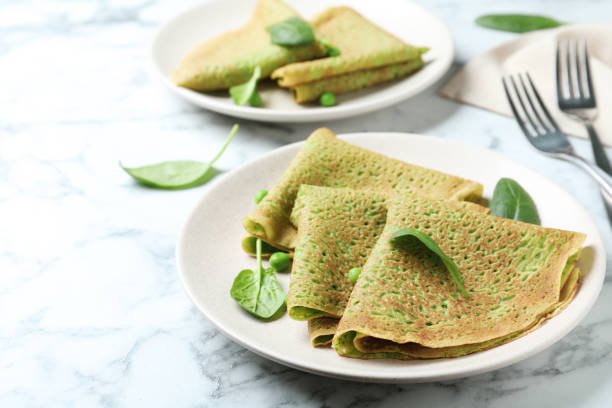Quitting smoking is one of the best things you can do for you health — and one of the hardest things to do. Nicotine cravings and smoking related habits often present quite an obstacle for many smokers when quitting. But there are actually many ways to reduce cravings, and follow a healthier lifestyle, besides smoking. There is an option for you whether you want nicotine replacement products or want to kick the habit and make healthier ones.
Understanding the Challenge of Quitting Smoking
Quitting smoking isn’t just about quitting nicotine addiction— it’s about changing the behavioral habits that accompany it. Smokers often associate cigarettes with what they do during the day — and what they do or don’t do — so giving up cigarettes can add another layer of difficulty. For this reason, looking for other ways to stop smoking is a reasonable endeavor.
Irritability, anxiety, and powerful cravings are all possible outcomes of nicotine withdrawal. Several strategies and products are available to help in combating these challenges. Breaking both the physical and mental dependency on nicotine is the focus of these alternatives.
Nicotine Replacement Therapy (NRT)
Nicotine replacement therapy (NRT) is one of the most commonly used alternatives to smoking, in which nicotine is delivered to a person seeking to quit in a controlled, not harmful, fashion. There are various forms of NRT available, including:
- Nicotine gum: A fast fix to try when you have a craving. Especially, chewing gum keeps your mouth occupied and might replace the hand to mouth habit that typically accompanies smoking.
- Nicotine patches: Patches are applied one time a day and generate a steady supply of nicotine over the course of the day, reducing the number of times to think of craving something.
- Nicotine lozenges: Slowly dissolving, these give off a slow release of nicotine to help ease nicotine cravings.
- Nicotine nasal sprays and inhalers: But these deliver nicotine quickly, in a hand-to-mouth action that psychologically can be comforting to people trying to quit smoking.
They work by reducing the cravings and withdrawal symptoms that usually come with the quitting of smoking, enabling that transition to be more natural.
Prescription Medications
Prescription medications like varenicline (Chantix) and bupropion (Zyban) are effective alternatives for people who don’t quit with aid and ensure. These medications work by hitting nicotine receptors in the brain to cut back on cravings and decrease how much you like smoking. Bupropion also helps balance brain chemicals; such as balancing brain chemicals to manageable anxiety and depression associated with withdrawal symptoms.
Before beginning these medications, it’s a good idea to speak to a healthcare provider to make sure they’re right for your situation. But the combination of prescription medications and behavioral support significantly improves your chance of sticking it out.
Behavioral Therapy and Support Groups
Nicotine addiction is both a physical and a psychological thing. Behavioral therapy addresses the problem of smoking in the mind, for example, which habits and emotional triggers. But, by working with a therapist, you can create you own ways to cope with cravings and avoid triggers, thereby boosting your chance of success.
Network of encouragement and shared experience from support groups, both in person as well as online. This group joining of people who are going through the same type of thing as you is really nice because they help you feel in some way less isolated in the quitting process, because you’re with a group of people who are all like, ‘Oh, man, I bet she feels exactly the same’.
Engaging in New Hobbies
Taking your mind off of smoking is a very big part of quitting. Now that you know smoking isn’t so good for you, filling that void left by smoking can be from picking up new hobbies or pursuing activities that you love. Some hobbies that can help include:
- Crafting: When your hands are kept busy with activity such as knitting, crocheting or painting your mind will be compelled to remain active as well.
- Gardening: Gardening is not just about raising flowers and vegetables, it is also a way to become physical, connect with nature and that lowers stress and supports well-being altogether.
- Exercise: Physical activity is one of the most efficacious practices to put in place in place of smoking. Not only does it aid in releasing endorphins which help improve mood, but it also aids in managing weight, a common concern at quitting smoking.
They distract from cravings to engage in both a physical and mental well being.
Social Alternatives and Support Networks
And, often, smoking is done socially, and many people have come to associate smoking with relaxing and socializing. Key is to replace smoking with healthier social substitutes. Some examples include:
- Connecting with friends or family: Call or meet loved ones instead of going out for a smoke break. Quitting is a lonely thing and social interactions can provide comfort and support during that process.
- Volunteering: Providing community service, or helping other people, can be a wonderful alternative to smoking.
Helping to create a good and caring social environment will help you quit smoking more successfully.
Physical Alternatives to Curb Nicotine Cravings
One of the best ways to help quench nicotine cravings and to cope with stress is to become more active. In addition, quitting smoking is associated with weight gain and exercise is a positive way to prevent that. Some recommended activities include:
- Walking: Good, clear the mind exercise, effective in clearing stress and managing cravings.
- Yoga and meditation: These are practices that can help smoke and also relieve stress, promote relaxation, and mindfulness — the best stress relieving guarantees to break your can of smokes during stressful moments.
- Strength training: Weightlifting or bodyweight exercises can serve as a productive out for frustrations and a vicious cycle that normally comes along with the quitting process.
Being more active physically is good for both your mind and body, and helps you remain smoke free.
Healthy Diet and Hydration
When quitting smoking, it is essential to maintain your healthy diet as smoking can lead to weight gain, for which it can be an enemy. While quitting, you can help your body do that by eating nutrient rich foods such as fruits, vegetables and lean proteins. As a matter of fact, drinking lots of water is equally important so as to flush out toxins from your system and reduce cravings.
Rather than taking a cigarette, cut down on snack foods like other food and go for fruits, nuts and raw vegetables for the same good effect as keeping your hands busy and mouth busy.
Changing Your Routine
Getting smoke out of daily routines takes time, but becomes intertwined with daily routines, so breaking these smokes becomes essential. Try something alternate like tea or go for a walk. Changing your habits takes away the triggers that lead to smoking, and replaces them with new, healthier routines you create in your day to day.
By paying attention to when and why you smoke, but also replacing that urge with healthier choices proactively, you can replace those moments with smoking with healthier actions.
Conclusion
Quitting smoking is tough, but finding the right back up to smoking can make it much easier. There’s a multitude of options when it comes to quitting smoking, including nicotine replacement therapies and medications provided by your GP, support groups, and new hobbies. With both the physical and mental side of nicotine addictions, you can take your first step into creating a full life, free of smoking and leading a healthier future.


